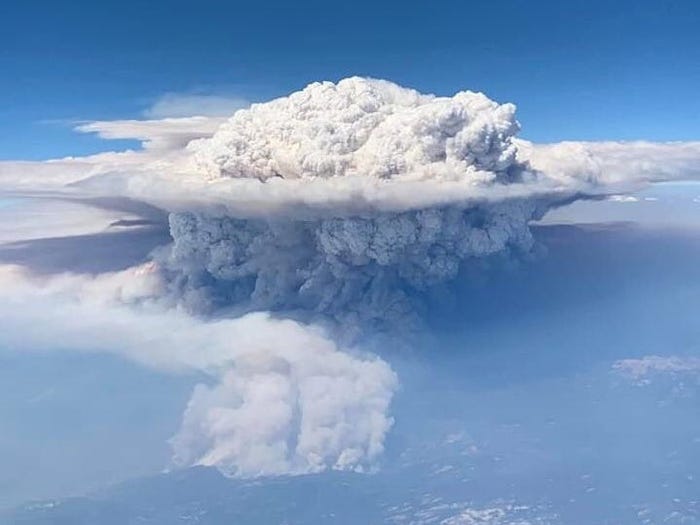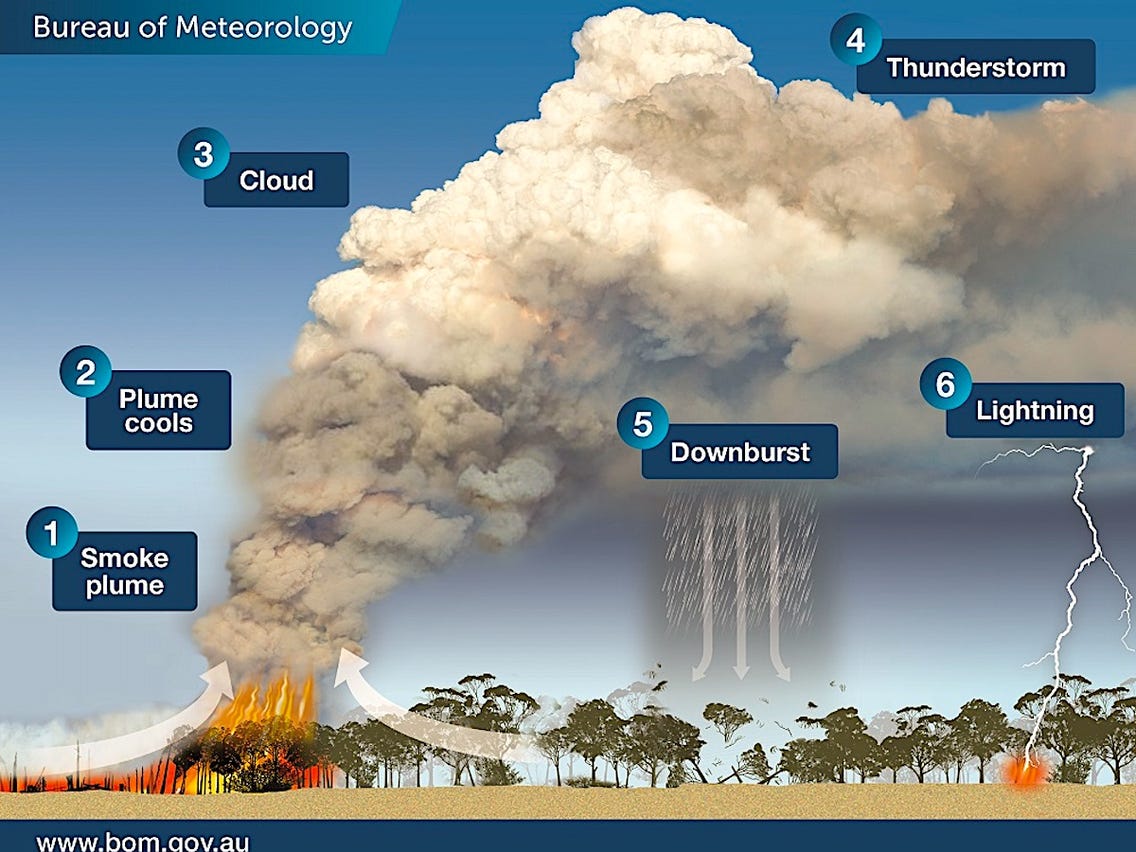
The 2021 fire season has been absolutely devastating so far. 40,945 fires have burned 4,399,923 acres to date in the US, a staggering figure compared to last year’s seemingly cataclysmic fire season, which left 2,747,015 acres burned up to the same date (8/19). However, one aspect of the fires this year that has received much more media attention is the numerous pyrocumulonimbus storms that the fires have spawned.
A pyrocumulonimbus cloud belongs to the flammagenitus cloud genus, which encompasses fire and volcanic induced clouds. To understand what a pyrocumulonimbus cloud is, a basic understanding of thunderstorm formation and dynamics is necessary.
Warmer air is less dense than cooler air, so if a parcel of air is warmer than its surroundings (particularly above it), it will continue to rise. As air rises in the atmosphere, it cools, which forces water to condense and form clouds and eventually rain. As this air rises, dust, water droplets, and other small particles bounce into each other, generating static electrical charge over time, like dragging your feet on a carpet to shock a friend. When enough charge is built, thunder and lightning can occur. These are the basic concepts of thunderstorm dynamics, so let’s now talk about pyrocumulonimbus, which are basically firey thunderstorms!
The heat of a wildfire is extremely intense and quickly heats layers of air immediately above the flames. As the air heats, it begins to rapidly rise due to the difference in density compared to its environment. As it rises, not only do atmospheric dust and water vapor bump into each other, but the pyrocumulonimbus cloud also has ash from the fire, which multiplies its electric charge. The result? An extremely powerful, potent, smokey thunderstorm.

While they may be an incredible sight to see, pyrocumulonimbus clouds are extremely detrimental to fire control efforts. Not only can they spawn lightning that may ignite more fires, but powerful downdrafts from the storms can fan the flames and cause rapid and dangerous spread of the fire.
